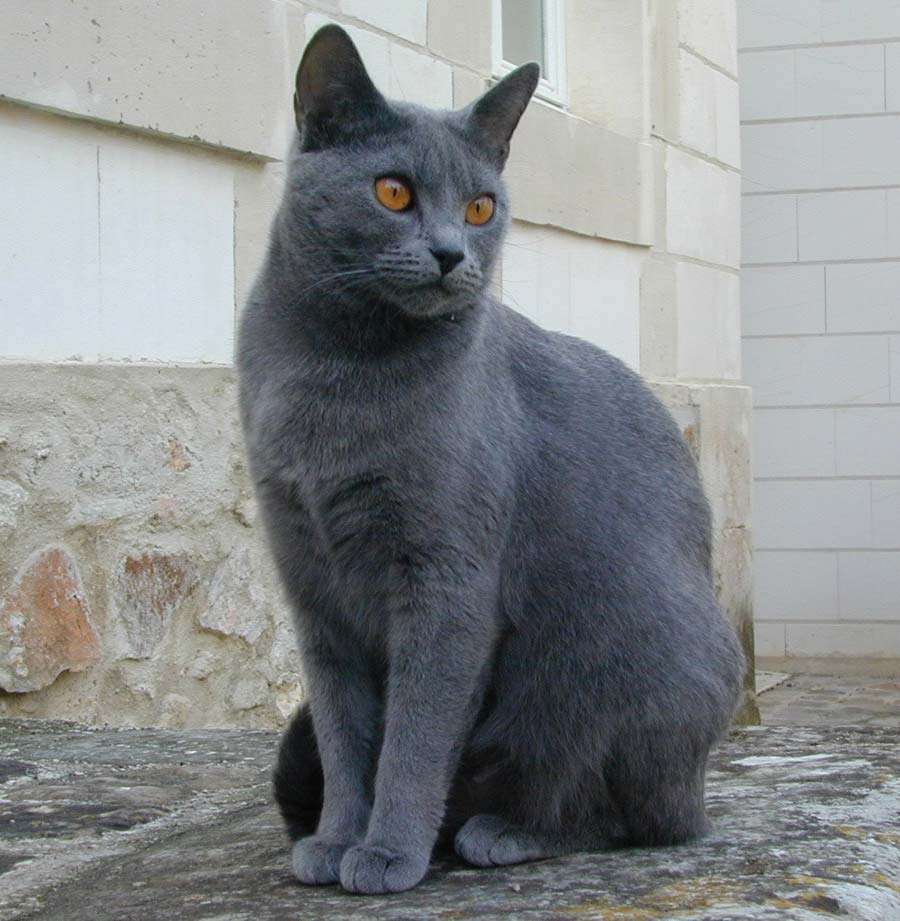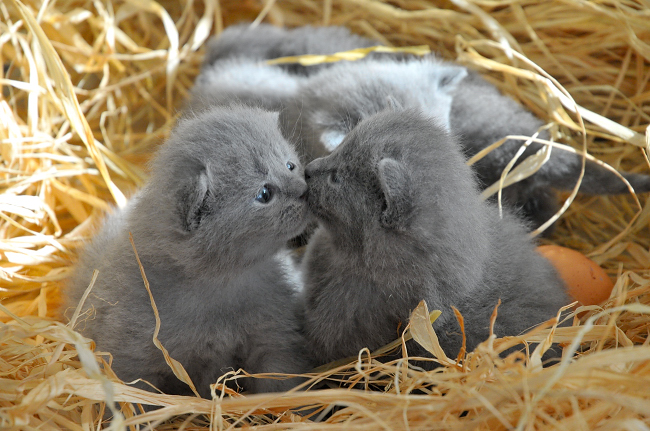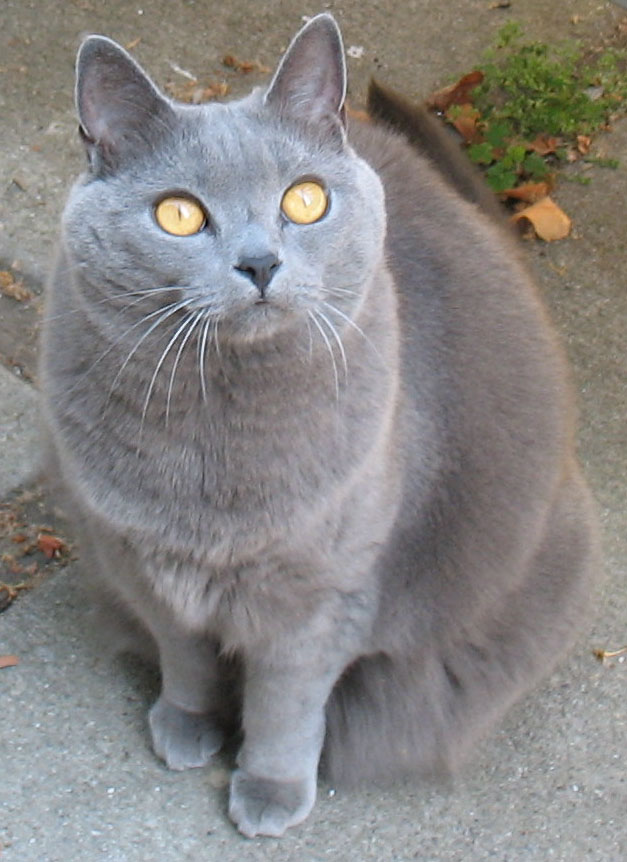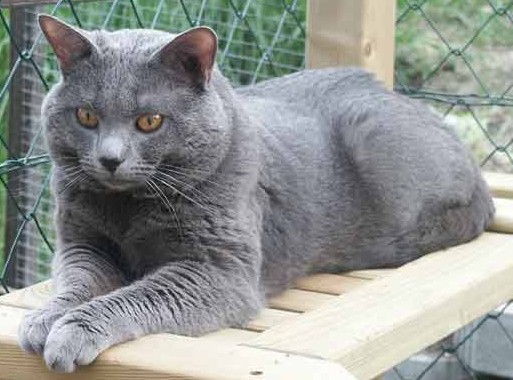



|
Chartreux Description
The Chartreux is a slow maturing breed, sometimes unflatteringly called a potato on toothpicks because of its stocky body but thin legs. Their body should be robust and medium long, with strong boning. Despite their stocky body, they are incredibly agile. Legs should be comparatively short and fine-boned, though sturdy and straight. Feed are round and medium sized.
The head of the breed is rounded and broad but not spherical, with powerful jaws and full cheeks; mature males should have large jowls. They should have a sweet, smiling expression. Ears should be medium in height and width, set high on the head with a very erect posture. Eyes should be rounded and open with colors ranging from copper to gold; a deep, clear and brilliant orange is preferred.
The coat of the Chartreux is medium-short and slightly woolly, breaking like a sheepskin at the neck and flanks. It should have a resilient undercoat and longer top coat. The color should be any shade of blue-grey with tips lightly brushed in silver. Emphasis should be placed on color clarity and uniformity over shade.
Chartreux Temperament
The Chausie is an incredibly active and athletic cat, known for being loyal. They will bond closely to the person they pick as their own. Intelligent and curious, they will get into everything and anything possible. From standing, a Chausie can leap up to heights of six feet, so it is wise to keep breakables locked away. They love to be in the middle of things, supervising from the center of activity. They are not a breed that does well alone. When provided outlets for energy, the Chausie is a loving and enjoyable breed.
Chartreux Care
In general, the Chartreux is a hearty and healthy breed with few needs. Some lines, however, have the gene for medial patellar luxation, so owners should be encouraged to have their kitten examined by an animal health professional and to request the health history from the breeder.
Chartreux History
According to legend, the Chartreux was bred by the Carthusian monks at the Le Grand Chartreux monastery in the French Alps. The cats came into the possession of the monks as the spoils of war of returning crusaders who chose to turn to the monastic life. They bred the silence and beauty into this breed with great care. None of this is verifiable with the order, however and so it remains a romantic legend.
The written history of the breed begins in the 16th century where the Chartreux was one of four breeds mentioned in Comte de Buffon's "Histoire Naturalle".
The 1920's are the start of the modern history of this breed. Two sisters discovered a small, blue-haired cat colony on the island of Belle- lle off the coast of France. These cats lived around a hospital in the city of Le Palais and matched the description of the Chartreux breed. The sisters made the decision to work with the breed and were the first to exhibit them in 1931. World War II decimated the breed, as it did most breeds in Europe, and to keep the bloodline going they were bred to British Blues (British Shorthairs), Russian Blues, and Persians. They are now shown in the same category as the British Shorthair and continued hybridization is allowed.
Chartreux made their debut in the United States in 1970 and received CFA Championship status in 1987. By tradition, all kittens born in a given year are named with a specific letter of the alphabet, set for that particular year. The letters K, Q, W, X, Y, and Z are omitted. There are waiting lists for the Chartreux as demand usually outstrips availability.
|